 Aprilia SR50R - Service manual > Dangerous Elements
Aprilia SR50R - Service manual > Dangerous Elements
WARNINGS
FUEL
DANGER The fuel used to operate engines is highly flammable and becomes explosive under particular conditions.
Refueling and maintenance operations should be carried out in a well-ventilated area, with the engine off.
Do not smoke when refueling or in the proximity of sources of fuel vapors. Avoid contact with bare flames, sources of sparks or any other source which may ignite the fuel or lead to explosion.
Take care not to spill fuel out of the filler, as it may ignite when in contact with hot engine parts.
In the event of accidental fuel spillage, make sure the affected area is fully dry before starting the engine. Fuel expands with heat and when left under direct sunlight.
Never fill the fuel tank up to the rim. Tighten the filler cap securely after each refueling.
Avoid contact with the skin and the inhalation of vapors; do not swallow fuel or pour it from a receptacle into another by means of a tube.
DO NOT DISPOSE OF FUEL IN THE ENVIRONMENT.
KEEP AWAY FROM CHILDREN.
Use only unleaded gasoline with a minimum octane rating of 95 RON and 85 MON.
LUBRICANTS
DANGER Correct lubrication is essential to the safety of the motorcycle.
Failure to maintain the lubricant level or the use of incorrect, old or dirty lubricant can cause the engine or transmission to seize, resulting in accident, serious injury or death.
Prolonged or repeated contact with gear fluid may cause severe skin damage.
Wash your hands thoroughly after handling.
Do not dispose oil in the environment.
For disposal, contact the nearest waste oil reclamation firm or the supplier.
WARNING Avoid spillage when filling the vehicle with oil. Immediately clean up any spilt oil, which can damage painted parts.
Oil on the tires can make them very slippery and dangerous to use.
In case of oil leaks, do not use the motorcycle. Identify the cause of the leak and repair it.
ENGINE OIL
DANGER Prolonged or repeated contact with engine oil may cause severe skin damage.
Wash your hands thoroughly after handling.
Do not dispose oil in the environment.
For disposal, contact the nearest waste oil reclamation firm or the supplier.
Wear latex gloves during servicing.
FRONT FORK FLUID
DANGER Front suspension response can be modified to a certain extent by changing damping settings and/or selecting a particular grade of oil. Standard oil is SAE 20 W. Choose suitable viscosity grades according to the desired set-up (SAE 5W softer, 20W stiffer).
The two grades can also be mixed in varying solutions to obtain the desired response.
BRAKE FLUID
CAUTION This vehicle is fitted with front and rear disc brakes. Each brake system is operated by an independent hydraulic circuit. The information provided below applies to both brake systems.
DANGER Do not drive the vehicle if the brakes are worn or not operating correctly. The brakes are the vehicles most important safety component and using the vehicle with the brakes in less than perfect operating condition comprises a high probability of traffic accident, which can result in serious injury or death.
The brakes are significantly less effective on a wet road surface.
DANGER If the road surface is wet, maintain a double braking distance, as both the brakes and the grip of the tires are significantly less effective in such conditions.
Water on brakes, whether due to a recent wash or picked up from a wet road surface, puddles or drains, can result in significantly reduced brake efficiency.
Failure to observe these instructions can result in serious accidents, with the risk of serious personal injury or death.
The brakes are essential to your safety. Do not drive the vehicle if the brakes on not in perfect operating condition.
Always check the brakes before riding the motorcycle.
Brake fluid is an irritant. Avoid contact with eyes or skin.
In the event of accidental contact, wash affected body parts thoroughly. In the event of accidental contact with the eyes, contact an eye specialist or seek medical attention.
DO NOT DISPOSE OF BRAKE FLUID IN THE ENVIRONMENT.
KEEP AWAY FROM CHILDREN.
Avoid spillage. Brake fluid can damage plastic or painted parts.
DANGER Do not use brake fluids other than the specified type. Never mix different types of fluids to top up the level, as this will damage the brake system.
Do not use brake fluid from containers which have been kept open or in storage for long period of time.
Any sudden changes in slack or hardness in the brake levers are warning signs of problems with the hydraulic circuits.
Ensure that the brake discs and brake linings have not come in contact with oil or grease. This is particularly important after servicing or inspections.
Ensure the brake lines are not twisted or worn.
Avoid accidental entry of water or dust into the circuit.
Wear latex gloves when servicing the hydraulic circuit.
DISC BRAKES
DANGER The brakes are the vehicles most important safety component.
To ensure your personal safety, they must be in perfect working order and should be checked before every ride.
Dirty pads must be replaced. Dirty or oily discs must be cleaned with a high-quality degreasing product.
If the vehicle is often used on wet road surfaces or on dusty or rough tracks, or in case of use in competition, reduce the service intervals by half.
Check brake pads for wear.
When the brake pads are worn, the fluid level lowers to compensate for the wear.
The front brake fluid reservoir is on the RH side of the handlebar, next to the front brake lever.
The rear brake fluid reservoir is located under the RH side fairing.
Do not use the vehicle if the brake system leaks fluid.
COOLANT
DANGER Coolant is toxic when swallowed and is an irritant. Contact with the eyes or skin can cause irritation.
In the event of contact with the skin or eyes, rinse repeatedly with abundant water and seek medical attention. If swallowed, induce vomiting, rinse mouth and throat with abundant water and seek medical attention immediately.
DO NOT DISPOSE OF IN THE ENVIRONMENT.
KEEP AWAY FROM CHILDREN.
DANGER Avoid spilling coolant onto hot engine parts, as it may ignite and produce invisible flames. Wear latex gloves when servicing.
Do not ride the vehicle when coolant is below the minimum level.
Coolant mixture is a 50% solution of water and antifreeze. This is the ideal solution for most operating temperatures and provides good corrosion protection.
This solution is also suited to the warm season, as it is less prone to evaporative loss and will reduce the need for top-ups.
In addition, less water evaporation means fewer mineral salts depositing in the radiator, which helps preserve the efficiency of the cooling system.
When the temperature drops below 0ºC, check the cooling system frequently and add more antifreeze (up to 60% maximum) to the solution, if needed.
Use distilled water in the coolant mixture. Tap water will damage the engine.
Refer to the chart given below and add water with the quantity of antifreeze to obtain a solution with the desired freezing point:

CAUTION: Coolants have varying specifications. The degree of protection is written on the label.
WARNING Use only nitrite-free antifreeze and corrosion inhibitors with a freezing point of -35ºC (-31ºF) as a minimum.
TIRES
WARNING An over inflated tire results in a hard, uncomfortable and less secure ride.
Over inflation also affects grip, especially on curves and wet surfaces.
An under inflated tire (insufficient pressure) can slip on the wheel rim, resulting in loss of control.
Under inflation also affects grip and handling, as well as braking efficiency.
Tire replacement and repair, and wheel servicing and balancing are delicate operations. They should be carried out using adequate tools and are best left to experienced mechanics.
New tires may be covered with a thin layer of protective coating which is slippery. Drive carefully for the first few kilometers (miles).
Never use any kind of rubber treatment product on the tires.
In particular, do not allow the tire to come in contact with liquid fuel, which rapidly deteriorates the tire rubber.
In case of contact with oil or fuel, do not clean but replace the tire.
DANGER Some of the factory-assembled tires on this vehicle are equipped with wear indicators.
There are various types of wear indicators.
For more information on how to check wear, contact your Dealer.
Check the wear visually and have the tires replaced when they are worn.
If a tire deflates during a ride, do not attempt to continue the trip.
Avoid sudden braking or steering maneuvers, and do not decelerate rapidly.
Slowly decelerate and move to the edge of the road braking with the engine until you come to a standstill.
Failure to observe these instructions can result in serious accidents, with the risk of serious personal injury or death.
Never use tube tires on tubeless tire rims, or vice versa.
See also:
 Aprilia SR50R - Service manual > Structure of the Manual, General Rules
Aprilia SR50R - Service manual > Structure of the Manual, General Rules
Structure of the Manual CONVENTIONS USED IN THE MANUAL This manual is divided in sections and subsections, each covering a set of the most significant components. For quick reference, see the summary of sections. Unless expressly specified otherwise, assemblies are reassembled by reversing the disassembly procedure. The terms "left" and "right" are referred to the motorcycle when viewed from the riding position. Motorcycle operation and basic maintenance are covered in the "OWNER'S MANUAL".
 Aprilia SR50R - Service manual > Running-in
Aprilia SR50R - Service manual > Running-in
RUNNING-IN Proper engine running in is essential to preserving engine life and performance over time. Twisty roads and gradients are ideal to break in engine, suspension and brakes effectively.
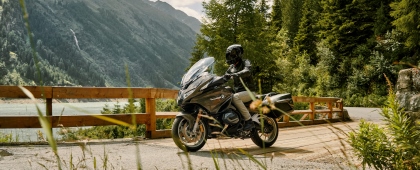 BMW R 1250 RT
BMW R 1250 RT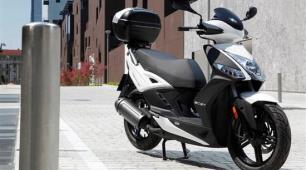 Kymco Agility 50
Kymco Agility 50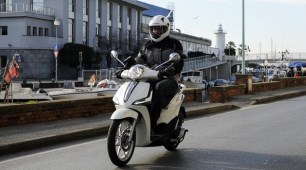 Piaggio Liberty 50
Piaggio Liberty 50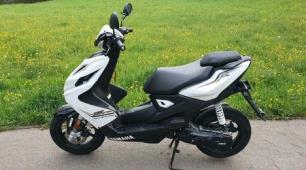 Yamaha aerox NS50
Yamaha aerox NS50 Aprilia SR50R
Aprilia SR50R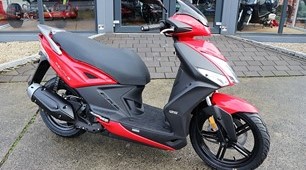 Kymco Agility 50
Kymco Agility 50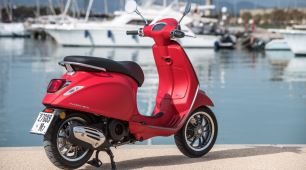 Vespa Primavera 50
Vespa Primavera 50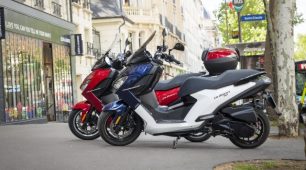 Peugeot Speedfight
Peugeot Speedfight